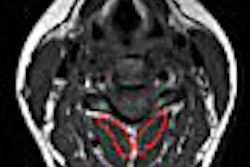CHICAGO - 2006 has not been an easy year for the National Institutes of Health (NIH).
The U.S. government's priorities with the war in Iraq, homeland security, the trade deficit, and the aftermath of Hurricane Katrina have unintentionally collided to create what NIH Director Dr. Elias Zerhouni calls the "perfect storm" and a "particularly difficult" year for his agency.
Speaking on Tuesday at the 2006 American Heart Association (AHA) meeting in Chicago, Zerhouni said the situation has also created a "paradox," with lawmakers and scientists both questioning why it is more difficult to receive NIH research grants, despite Congress doubling the agency's budget in 2003.
Of the scientists who applied for funding in 2003, only 30% received research grants. In 2006, the approval rate is down to 20%. With a current NIH budget of $28.6 billion, many would-be researchers want to know what the problem is.
Zerhouni told AHA members that he is well aware that scientists are "very concerned about the deterioration of their chances for beta funding," adding that the issue is one of supply and demand and the ability -- or the lack thereof -- of the NIH to fund the great majority of those requests.
"The success-rate problem is very simply due to a near 100% increase in demand for grants, a 40% increase in the cost of grants, and inflation-adjusted budgets that are not keeping up," he said.
Demand over supply
The demand for grants totaled approximately 24,000 applications in 1998. From 1999 to 2003, the number of submissions grew by 8,300 new applications. From 2003 to 2005, the increase in new applications remained the same as in the previous five-year span.
The number of scientists applying for grants was 19,724 in 1998. That total increased by 5,323 researchers in the following five years, and approximately 5,000 more requested funding from 2004 to 2005. Today, there are some 34,000 scientists awaiting approval for grant money.
There also has been what Zerhouni described as "an enormous amount of building on university campuses." From 1990 to 1997, medical schools invested $3.2 billion in research facilities. From 1998 to 2007, the total commitment to new medical and research construction mushroomed to $15 billion. Demand has escalated as universities build their new facilities and hire new faculty.
NIH's roadmap
Despite its current shortfalls, Zerhouni advocates that the NIH emphasize its core values to discover more knowledge with each generation. He also urged the medical community to continue its incubation of new ideas, even during times of financial restraint.
"If you look at the landscape of public health, diseases today like diabetes affect more organs than just one," he said. "It is impossible for the NIDDK (National Institute of Diabetes and Digestive and Kidney Diseases) to have all the portfolio of diabetes (research). It is clear we need more cross-cutting coordination and synergy, and we need to have a balanced portfolio."
He also promised that the agency will maintain a balanced national biomedical research portfolio with the allocation of approximately 60% of NIH's budget to basic research. With the private healthcare sector spending twice as much money on clinical research as the NIH, Zerhouni said that combined commitment is "strategically oriented to advance our ability to develop new treatments."
Another priority is the protection of new and junior investigators of the future. In medical schools, the age for appointments to assistant professorships has increased from 34 to 38 years. At the same time, the age at which NIH scientists receive their grants has increased from 37 years old in 1980 to 44 today. "This is an important principle we need to work on -- to encourage new junior investigators and allow them to be independent earlier in their career," Zerhouni said.
Be proactive
The NIH also needs to better project the positive effect it has on healthcare across the U.S. In past Congressional testimony, Zerhouni offered statistics on the 63% decrease in mortality among people with coronary artery disease and stroke. In dollars and cents, he estimated that decline has an annual value of $1.5 trillion to $2.6 trillion. "Even if one-third of that was due to the NIH research," he said at the AHA meeting, "that would be an enormous return. I think Congress now understands the importance of sustaining the investment in our research."
While 83% of American people believe medical research is very important, only 27% know that the NIH provides funding for research. "This disconnect has to stop," Zerhouni said. "We need to do a better job at showing the connection between success at the local level and the fact that the NIH funds it."
By Wayne Forrest
AuntMinnie.com staff writer
November 16, 2006
Related Reading
NIH leader: Imaging will advance pure science to reduce real healthcare burden, May 9, 2006
Imaging poised to transform the future of medicine, February 2, 2006
U.S. National Institutes of Health releases ethics rules, August 26, 2005
U.S. ponders loosening NIH ethics rules, April 27, 2005
NIH director lays out case for reform, March 18, 2005
Copyright © 2006 AuntMinnie.com



















